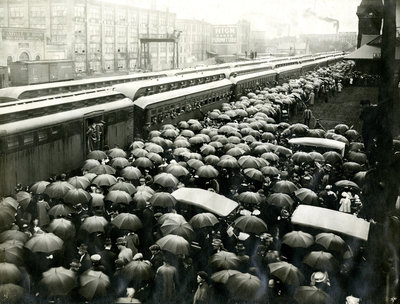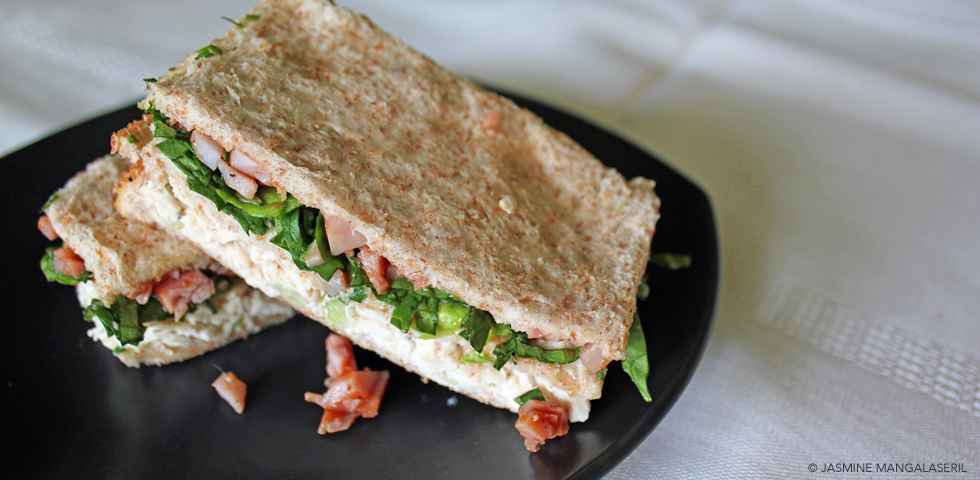
15 May 1916: Colonel Lochead’s open letter to Berliners
Regarding the reports apparently more or less generally circulated throughout the City, that the officers, NCOs, and men of the 118th Battalion mean to take an active part in the election slated for Friday, I beg to state that I myself and every other officer of the Battalion pledge ourselves that nothing of the kind was ever suggested or contemplated and that no soldier will take any part in said election beyond the polling of his vote. Approximately 100 of the officers and men have votes, and these will be given only sufficient leave to proceed to the polls to register their votes otherwise, the Battalion will carry on as usual.
Again, in reference to the reports that the soldiers mean to carry on a campaign of property destruction and of general riot before being moved the City, I beg to state that I, as Officer Commanding, pledge my word of honour that nothing of this character will ever take place, or was ever contemplated so far as I can learn. In this connection, I am glad to add that every officer, NCO, and man has pledged himself that he will not misconduct himself in any manner during the remainder of his stay in Berlin. Let me, therefore, assure the public that they may rest perfectly easy in this regard.
~ WMO Lochead, Lieut-Col, OC 118th Battalion CEF (published in The Berlin News-Record)
19 May: Voting Day (and Night)
Berliners passed the bylaw to change the city’s name. The Berlin Daily Telegraph declared it was by a “substantial majority;” The Berlin News-Record described it as “tight squeeze.” There was an 81-vote difference.
According to The Telegraph, it was the bylaw’s “patriotic character,” as well as soldiers’ and women’s votes that carried the day. What was probably more key was not allowing those who couldn’t qualify as British subjects to vote (for example those born in an enemy alien state (such as Germany))–this group included people who lived in Berlin for more than 30 years. If the soldiers influenced voters, the newspapers didn’t mention it. Regardless, one of the highest turnouts was recorded, with more than 3000 ballots cast: 1569 for and 1488 against renaming. It was a nail-biter until the end.
When all was said and done, revellers poured out of City Hall and into about 50 awaiting automobiles (or, according to The Telegraph, hundreds of cars), organised by Alderman Hahn. The 108th’s regimental band struck up It’s A Long Way to Tipperary and led the motorcade up and down downtown streets, waving, hooting and hollering to thousands of onlookers. Some of those watching were ecstatic, some were gloomy. The victorious cheered, waved flags, blew horns and let off fireworks into the air and into the crowds. The Telegraph declared it one of the most significant that has ever been held in the city for many years…”
The parade returned to City Hall where some key name changers—including aldermen and business notables—addressed the masses. Most of the speeches were sodden with expected patriotic bluster and choice phrases such as, “Tonight a new city is born into the province of Ontario and the British Empire. It will shine forever as one of the brightest gems in the crown of the Empire!”
SJ Williams’ comments included slanderous statements against Sir Adam Beck and nasty things about Mayor Hett and MPP CH Mills (I don’t believe any of the three were present—Hett definitely wasn’t). Within days, Beck issued a statement addressing the shirtmaker’s fibbery.
Apart from some minor fireworks-related injuries, the newspapers reported well-behaved crowds, and 118th members present returned to barracks before Last Post played at 10 pm. Even so, the celebrations continued well into the night.
Afterwards, Mayor Hett said he had no misgivings, “It’s best for the city. No matter what the name will be, I will faithfully serve with the city under the new name.”
21 May: Off to the Races
The Waterloo distiller, Joseph E Seagram, founded a thoroughbred horse racing in 1888. The Stables won 19 Queen’s/King’s Plates, from 1888-1933 (when the stables were dismantled), and Joseph E’s son, Edward F, won the family its 20th plate in 1935–he died two years later.
The Waterloo Stables took half of the King’s Plate’s (now, the Queen’s Plate) slots. According to The News-Record, the Stables’ black and gold were the only colours seen at the 56th‘s running. The chestnut colt Mandarin won, with a race time of 2:12, three lengths in front of Gala Day, followed by Gala Water. Seagram set a new race record when his horses came in 1-2-3.
22 May: So long, soldiers
As with other employers whose men went off to fight the Hun, The Mutual Life Assurance Company of Canada (now SunLife Financial) honoured its employee, Colonel Lochead. Instead of what seemed to be the customary watch (or other trinket), he received a bespoke steamer trunk, “suitable for military officers.”
A hastily organised send-off at Victoria Park drew 4000-5000 spectators. With Czar (the battalion’s woofy mascot) at the lead, Lochead paraded his men to the Park, followed by aldermen and other prominent citizens in automobiles. The city presented the Battalion’s Berlin boys with $10 gold coins (almost $200). The Telegraph captured the day with phrases such as, “lustily” cheering crowds, and “The feelings of the multitude were those of mingled admiration, love and sorrow,” and “Perhaps no finer battalion has ever been recruited—at least the people of North Waterloo would hardly admit it—since the beginning of the war.” (see notes)
When the soldiers disembarked in London, Ontario, the Forest City’s residents expected to see hundreds of men bedecked in Pickelhauben. Luckily, Czar dissipated any disappointment and the friendly pooch lapped up attention. That said, the Battalion’s other four-footed mascot named Collie “was busy settling an argument with a dog showing signs of dachshund and Irish terrier breeding.”
25 May: Authorising The Committee of 99
At the next council meeting, Mayor Hett passionately pled for the two sides to heal the schism. He also assured citizens he would not tolerate protests against the result or demands for a recount. The mayor was heartily applauded.
Council authorised The Committee of 99 to boil down the list of possible names from several thousand to six. The committee breakdown was as follows:
| City Council – 16 | Employers’ Association – 5 | |
| Board of Trade – 10 | Retail Merchants – 5 | |
| Public School Board – 10 | Board of Health – 4 | |
| Trades & Labour Council – 10 | Library Board – 4 | |
| Ministerial Association – 6 | Light Commission – 4 | |
| Separate School Board – 6 | Water Commission – 4 | |
| Collegiate Institute Board – 5 | Park Board – 3 | |
| Commercial Travellers – 5 | Catholic Fathers – 2 |
With such a notable group responsible—and one that favoured the Board of Traders—Berliners must have felt some assurance that the shortlist was in good hands.
Notes
- Yes, I know the open letter should have been mentioned last week, but it seemed fitting to include it here. Whether or not the visit two days before caused Lochead to take pen to paper, one can only guess.
- The Telegraph also decided to mention the Battalion’s transgressions as “unfortunate occurrences…not more than was to be expected where a large number of men are gathered together.”
Want a bit more information?
- About the Kitchener 1916 Project
- Bank of Canada’s Inflation Calculator was used to calculate modern price equivalents (2016)
The Recipe
24 May was Empire Day (a forerunner to our Victoria Day). Traditionally school children would listen to inspirational speeches and sing patriotic songs such as The Maple Leaf Forever. Local newspapers reported the weather was fine and many Berliners spent the day fishing or at Woodbine Raceway; Galt hosted a tattoo and fireworks, and many picnicked at Waterloo’s pleasure grounds.
With picnicking in mind, I found Mrs. Rorer’s Sandwiches, a 1912 American cookery book devoted to sandwiches. I settled on the Windsor Sandwich, a layered construction featuring chicken salad and ham salad. It is a very pretty sandwich, when cut, but may not be to everyone’s taste
Windsor Sandwiches, From Mrs. Rorer’s Sandwiches by Mrs. S.T. Rorer (1912)
Chop sufficient cold boiled chicken to make a half pint, add a half cupful of finely chopped celery, a half teaspoonful of salt, a dash of pepper and four tablespoonfuls of cream; mix. Chop sufficient cold boiled ham or tongue to make a half pint, add a tablespoonful of tomato catsup, a few drops of Worcestershire sauce and a dash of pepper. Trim the crusts from an entire loaf of bread, butter the end of the loaf and cut off a thin slice, and so continue until you have the desired quantity of bread.
Shred one head of Romaine or a bunch of cress. This of course must be crisp and dry. Put a layer of the chicken mixture on the buttered side of a slice of bread, put on top another slice of buttered bread, then a thick layer of the shredded cress or Romaine. Put a thick layer of the tongue mixture on another slice of bread and cover it over the cress. Press firmly together and cut the slices directly into halves the long way. Wrap in waxed paper or tie with baby ribbon. Served at afternoon teas. If well made, they are the most elaborate and dainty of all sandwiches.
Windsor Sandwiches (Modern Equivalent)
Yield: Serves 2
| 120g | 250ml | 1 Cup | Cold cooked chicken, chopped |
| 125ml | 125ml | ½ Cup | Celery, finely chopped (approximately 2 ribs) |
| 1.75ml | 1.75ml | 1/3 Teaspoon | Salt |
| Pepper | |||
| 62ml | 62ml | ¼ Cup | Cream |
| 130g | 250ml | 1 Cup | Cold cooked ham or tongue, chopped |
| 15ml | 15ml | 1 Tablespoon | Tomato ketchup |
| Worcestershire sauce | |||
| 3 | 3 | 3 | Romaine lettuce leaves, chiffonaded (or equivalent in watercress) |
| 6 | 6 | 6 | Slices of bread (thin slices, if possible) |
| Butter |
Make the chicken mixture by combining the chicken, celery, salt, cream and a good pinch of pepper. Set aside.
Make the ham mixture by combining the ham, ketchup, a few drops of Worcestershire sauce and a good pinch of pepper. Set aside.
Butter one side of each of the six slices of bread.
Assemble each sandwich as follows:
- Spread half the chicken mixture on the buttered side of one slice of bread. Cover with another slice of bread (buttered side up). Place a thick layer of shredded greens on top and then half the ham mixture. Top with the last slice of bread. Press firmly
- Trim the crusts and cut into fingers.
Notes
- Yes, I know the Royal Family didn’t change their name to Windsor until 1917. That’s not why I chose the recipe.
- I assumed by cream, the author meant table cream or whipping cream (and not salad cream). The mixture works well with cream, but would probably work just as well with mayonnaise, salad cream or salad dressing.
- Mrs Rorer didn’t specify what sort of bread to use (some of her other recipes do)—I used brown bread, but use whatever you have on hand.
- Instead of cooked ham, I think tinned flakes of ham would hold together much better.

